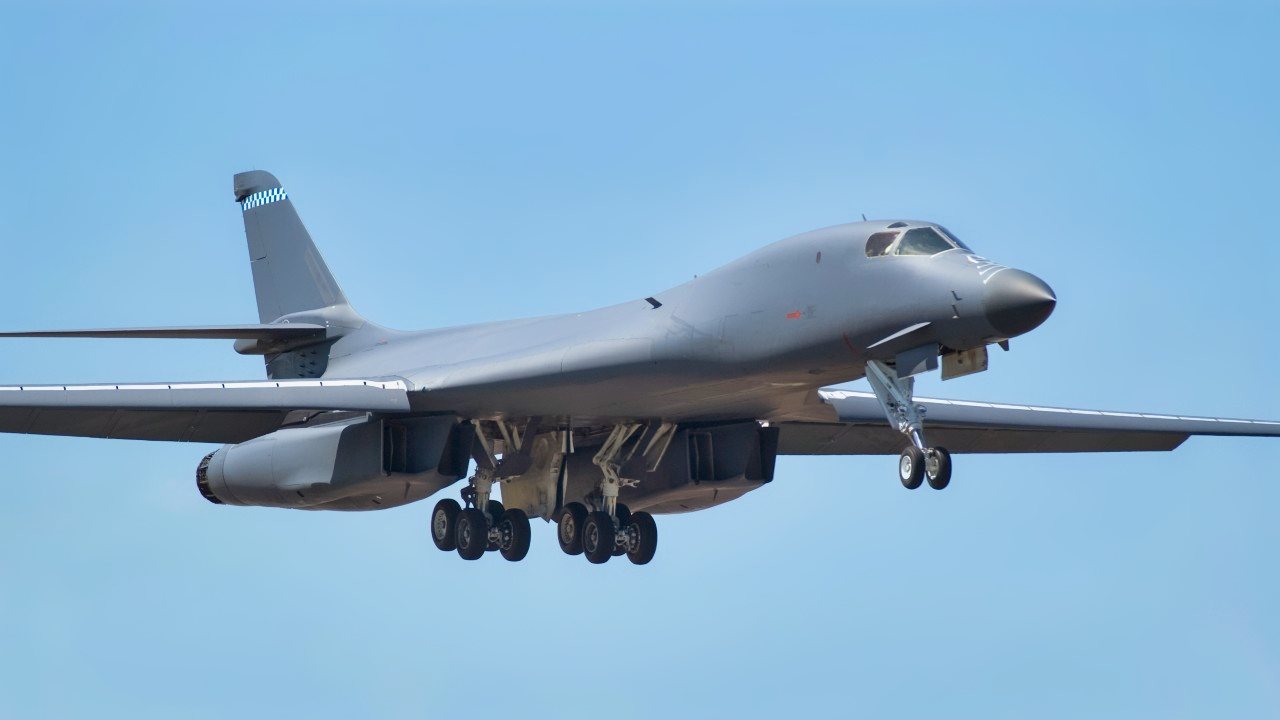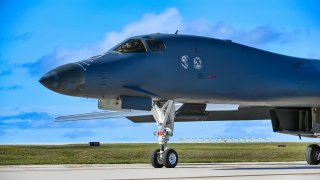How Fast Is the U.S. Air Force's B-1B Lancer Bomber?
The B-1B Lancer, the fastest bomber in the U.S. Air Force's inventory, is capable of reaching speeds of Mach 1.2, or over 900 miles per hour at sea level.
Summary and Key Points: The B-1B Lancer, the fastest bomber in the U.S. Air Force's inventory, is capable of reaching speeds of Mach 1.2, or over 900 miles per hour at sea level.

-This supersonic speed is particularly impressive given the B-1B’s ability to carry a massive payload of 75,000 pounds and a fuel capacity of 265,274 pounds, resulting in a maximum takeoff weight of 477,000 pounds.
-Powered by four General Electric F101 afterburning turbofan engines, the B-1B has set nearly 50 world records for speed, payload, and range since its introduction.
Why the B-1B Lancer Holds Nearly 50 World Records for Speed and Payload
Bomber aircraft are not typically associated with high speeds. Rarely are they fast. Bombers are designed to deliver ordnance to targets. Accordingly, they must accommodate that ordnance in bulk, which demands a large airframe. This correlates with low speeds.
The B-52 Stratofortress is an informative example. The lumbering, eight-engine brute can hit 650 miles per hour, which is not much faster than the jet you might take out of LaGuardia. The B-2 Spirit, meanwhile, a bomber built around stealth characteristics, has a classified top speed somewhere in the high subsonic range – again, not much faster than an Airbus commuter.
One bomber in the U.S. inventory, however, does fly at supersonic speed: the B-1B Lancer.
How fast is the B-1B Lancer?
The B-1B Lancer is the fastest bomber in the U.S. inventory. Its top speed is Mach 1.2, or 900-plus miles per hour at sea level.
Granted, Mach 1.2 is hardly a pace in the same category as American fourth- and fifth-generation fighters, which can fly past Mach 2. But fighter jets aren’t tasked with carrying a 75,000-pound payload or a 265,274-pound fuel capacity. The Lancer itself weighs approximately 190,000 pounds, with a maximum takeoff weight of 477,000 pounds. That’s a heavy airplane, which makes the Mach 1.2 speed more impressive than the raw speed figure implies.
“The B-1B holds almost 50 world records for speed, payload, range, and time of climb in its class,” the Air Force boasts, adding that “the B-1B’s blended wing/body configuration, variable-geometry wings and turbofan afterburning engines, combine to provide long range, maneuverability and high speed while enhancing survivability.”
The afterburning turbofan engine enabling the B-1B’s exemplary performance is the General Electric F101. In full afterburner mode, the F101 can provide over 30,000 pounds of force. It was General Electric’s first afterburning engine and was designed specifically for the program that would become the B-1. An F101 was used experimentally in an F-16 Fighting Falcon during the early 1980s, and that experiment gave rise to GE’s F110, an F101 derivative that powers fighter jets like the F-15E Strike Eagle and F-14 Tomcat.
The F-101 was also the starting point for what would become GE’s CFM56 series, a turbofan engine that would be used for commercial aviation platforms including the Airbus A320 and the Boeing 737.

The End of the B-1
While the B-1B has served admirably for nearly 40 years, the supersonic bomber is slated for retirement. Along with the subsonic, stealthy B-2 Spirit, the B-1B will be phased out in favor of the upcoming B-21 Raider, which is currently undergoing initial flight testing. Presumably, the B-21 is based on the B-2 flying wing configuration and will not have supersonic top speed, meaning that once the B-1B is retired, the Air Force will be without a supersonic bomber option.
About the Author: Harrison Kass
Harrison Kass is a defense and national security writer with over 1,000 total pieces on issues involving global affairs. An attorney, pilot, guitarist, and minor pro hockey player, Harrison joined the US Air Force as a Pilot Trainee but was medically discharged. Harrison holds a BA from Lake Forest College, a JD from the University of Oregon, and an MA from New York University. Harrison listens to Dokken.
Image Credit: Creative Commons.


